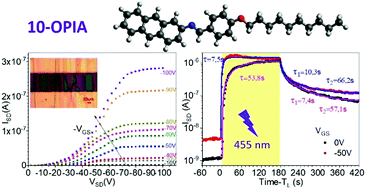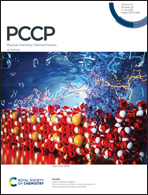Novel organic semiconductors based on 2-amino-anthracene: Synthesis, charge transport and photo-conductive properties†
Abstract
Anthracene is considered to be a popular choice as a building block for organic semiconductors. The present work is dedicated to the synthesis and characterization of a novel semiconductor (10-OPIA) possessing mesogenic properties, which allows better control over charge transport in the bulk of a material. A novel anthracene-based molecule is characterized for its potential applications: frontier molecular energy levels are studied by optical spectroscopy and cyclic voltammetry and compared to values obtained via ab initio calculations. Thermophysical and mesogenic properties are investigated by optical microscopy and differential scanning calorimetry. Charge transport properties are characterized by means of an OFET device. It is found that this material can be easily aligned and exhibits a field effect hole mobility of 5.22 × 10−5 cm2 V−1 s−1 and an ON/OFF ratio of 104 in the device prepared by drop casting. Finally, the photoconductive properties of this novel material are addressed in order to investigate its potential applications for organic phototransistors: it exhibits a large photoconductive gain of >100 and a photo-responsivity of >1 A W−1.



 Please wait while we load your content...
Please wait while we load your content...